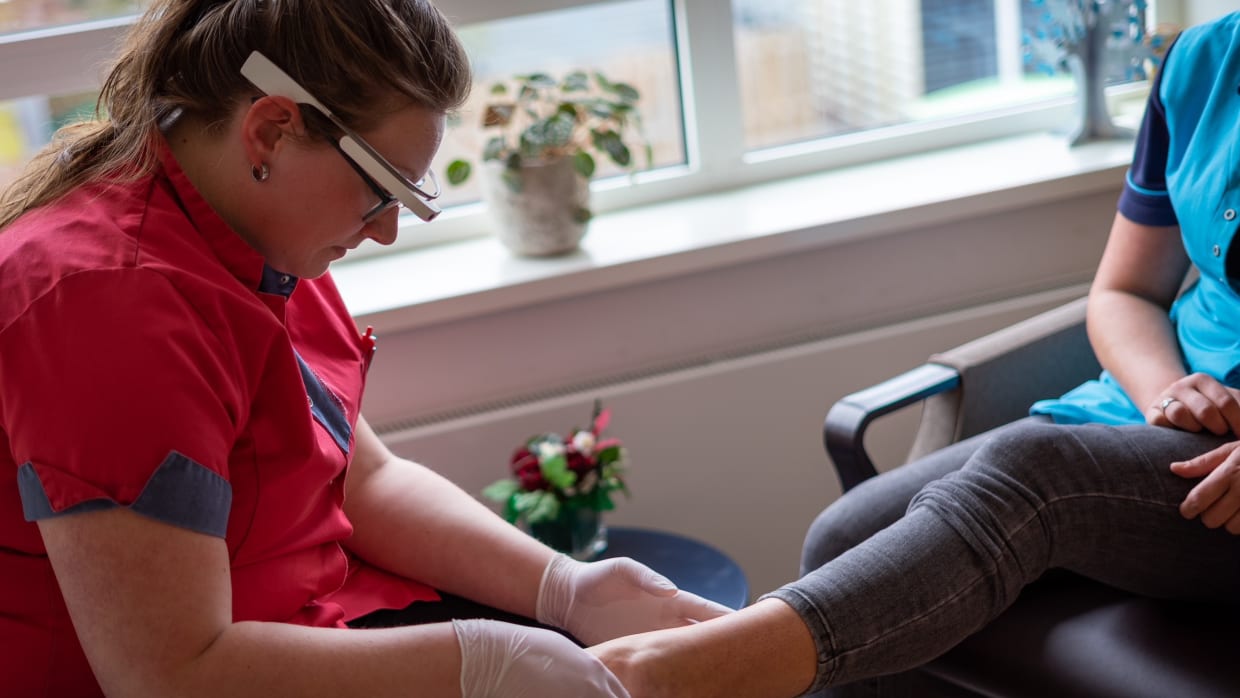When Google Glass was launched in 2014, expectations were sky-high. The smart glasses would revolutionize the world because, for the first time, the user could see more than with the human eye. Via a small cube at the right corner of the eye, the glasses projected an additional screen onto the “real” world. The glasses would integrate the digital and physical worlds, was the big promise.
Healthcare could benefit from this, observed Niek Zuidhof, lead researcher in Technology, Health & Care and Employability Transition at Saxion University of Applied Sciences, who has been closely following the smart glasses since 2014. Zuidhof has spent the past eight years doing a part-time PhD on the topic, research he is completing at the UvA, the university where his doctoral supervisors Peter-Paul Verbeek, the current rector magnificus of the UvA, and Somaya Ben Allouch transferred to in the meantime.
Why was Google Glass an instant flop?
“Google marketed the glasses to consumers very early on, resulting in people walking around with them on the street and at conferences. The glasses were meant to take pictures or movies that you could immediately share on social media or with your friends. But privacy concerns arose. After all, the camera could always be filming and people also found the glasses ugly. So as a consumer product, the glasses flopped – for now – but they are being used in healthcare. Unlike with a smartphone or tablet, with glasses, you have your hands free.”

Maria Malik is your guide to the immersive world of Virtual Reality (VR). With a passion for VR technology, she explores the latest VR headsets, applications, and experiences, providing readers with in-depth reviews, industry insights, and a glimpse into the future of virtual experiences.


